A forgotten place called Comrey
On this adventure we explore a forgotten community, Comrey Alberta, deep in the sparsely populated and seldom visited southeast corner of the province. This is surely the most lonely and remote frontier Connie and I have ever visited. The sense of isolation on visiting these vast open spaces is simply overwhelming, almost to the point of it being uncomfortable in fact, and I for one don’t know how the old pioneers handled it without losing their minds. They must have been people of strong character to live in is such an out of the way place.
There never very much in Comrey. Think of it more as a centre or reference point for a large district, then a true town. Even so, there is a number of interesting old buildings and the like to be found in the area. On this visit we explored the old school/church/community centre, the cemetery, and the remains of several old farms. I am sure there is more to see (reason to return) as we only ventured down a couple roads.
On this trip we were joined by fellow history buffs Jason and Rebecca Sailer, our guides this day. Thanks, we had a blast hanging with you two. It was they who suggested this as a destination. I was admittedly a bit unsure given that the area was never heavily populated and was worried there would be little to see. And in a way that was indeed true, but we did find, here and there, was wonderful. Jason and Rebecca also supplied some pics to this article.
Comrey was established around 1910. Few people lived in the area, outside a small first nation’s population prior to that time and even after settlement the number of people here was never that great. If the place had a heyday, it was the period 1910-1920s. Many people moved away after that time and today there are only a few scattered farms here and there.
While a town may have been planned – and this author has even seen a map showing a proposed railway to the community – nothing really came of it. A school was built in 1910, which I guess would be considered the true centre of the Comrey region. The land on which it sits was donated by a local farmer, Mr Roen, who’s old house we’ll be visiting later this same trip.
This school also filled in as the local church at times. A couple times in its history it closed for extended periods due to a lack of students. The final time was in the late 1950s. Afterwards the building was then used as a community centre and it hosted various events over the years.
Based upon photos and old records found while researching this article, anywhere from six to perhaps fifteen students, of all ages, attended classes. As was typical any grades needed were taught. I understand the teacher did not live on the property but rather boarded with a local farmer. Most remote schools like this had a high turn over rate of teachers, as could be expected given the tough conditions.
It’s not known when the last event was held here, but I’d guess it’s been a while. Some old documents were found inside (the door is unlocked – if you visit close it on leaving) including an award certificate from 1934, an old receipt book from Bollinger’s Store in nearby Manyberries (their phone number was a single digit!) and a calendar from 1973, too covered in bird poop to shoot. Also scattered about were some old school chairs. Hanging in the windows were some curtains that I am certain my mom had.
The back room of the building is not original and was added at some point, probably around the time it became a community centre. The reason I’m guessing this is that it contains a kitchen which would be needed for such a venue. Behind the building is the “office”. These crude biffies remind us that indoor plumbing in the old days, especially so in rural areas like this, simply did not exist. Image the fun in using it on a blustery cold day?
Just down the road from the school and on the opposite side is the Comrey Cemetery. Most of the people interned here died long ago and there are few modern era graves seen.
Further down the road is a small farm. This was Mr Roen’s place, a Norwegian fellow who donated the land to the school. Always a bachelor he lived in this small building from around 1910 to 1947 when illness forced him to move away to Medicine Hat. As far as we know based on our research, no one lived in it afterwards. That means it’s been forgotten for well over sixty years! As is usual with abandoned farms, the building is leaning and sagging and lacks windows, is covered in bird poop, and is full of junk – stuff like old tires, papers of all kind, and broken plaster. An old stove is a nice find whicg I bet it came in handy on a cold Comrey winter. A few modern grainiers are on the property, plus one old horse shed. Some old tack was found inside the latter.
Found near the house was the usual assortment of farm implements and the like. A long parallel row of evenly spaced pipes jutting out of the ground struck me as odd. I wonder what the story behind them is?
Not far way is an old barn, all that remains of the Larsen farm established in around 1910. Later it was owned by Olson/Sipe and later Sipe all by himself. Larsen and Sipe were Americans while Olson was from Sweden. The farm, as they often do, had its ups and downs and was finally abandoned in the 1940s. A picture from 1916 shows the entire farm, but with a different barn, suggesting this one was added after that time.
The building has a false front and given its position right beside the road makes one think it was perhaps used commercially, as say a livery stable. Businesses often had this style of front and were placed in such a way. We could find no mention of this in the history books, but information is scarce and spotty at best (see March 2015 update below). The building seems solid enough.
The next farm we found is located a couple sections away all be itself on a small rise. There is no road to it, so we hike in. This tiny, almost one-room-school looking structure originally belonged to a family called Olson, which came from Sweden via the US (it appears they are not related to the Olson spoken of earlier – this name was common in the area however). I find it strange that such a small dwelling, which looks much like a bachelor’s house, would be home to an entire family. There are only two rooms! Of course, information is so spotty that I might be interpreting it wrong and this building may have indeed belonged to someone else. Research continues.
Anyway, the Olsons quit the area in the early 1920s and moved to Wilson Siding near Lethbridge. Clearly someone used this house after they left, but who and for how long is unknown. Oddly, many purses and old dresses were scattered about the place. I did not venture inside as the entire floor was a wet mushy congealed mass of old papers and stuff. It did not look safe. Some old newspapers were seen in the goo, but were too faded to make anything out. Too bad, they could have provided some hints as to when the building was last lived in.
Presumably there was a barn and other support structures here, but no evidence could be found of them. With the house all by itself and its diminutive size, the broad expanse of plains spreading out in all directions, and the prominent Sweetgrass Hills of Montana in the southwest, all conspired to make the experience of visiting this lonely house a hard one to describe. It was powerful, emotional, almost frightening in way. It’s a feeling of isolation to the extreme. We might as well be on the moon. Then imagine it so long ago with no phones or cars? Chilling.
The name Comrey is acronym derived from the names of early settlers in the district.
So ends our visit. I’d love to return and explore more back roads in the area. I’ve seen a number of interesting looking buildings using Google Earth that I think need to be checked out. If you know anything about the community, or are related to someone who once lived there or live there yourself, we’d love to hear from you.
Update: March 2015. Thanks to Jason Sailer, who’s shed some light on that false-front building. Constructed in 1917, it was originally a fraternal hall in the nearby community of Pendant d’ Oreille, which closed in the mid-1920s and later moved here to be used as a barn. Photos have been found showing it while still at the original location.
If you liked this post…
St Joseph’s Church Courval SK.
Rowley Alberta ghost town.
Lumberton ghost town.
If you wish more information on what you’ve seen here, by all means contact us!
Date of adventure: August, 2014.
Location: Middle of nowhere, AB.
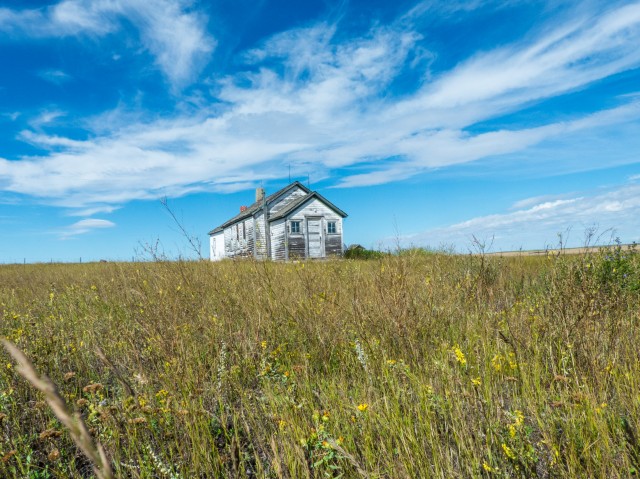
The Comrey Alberta Community Hall.
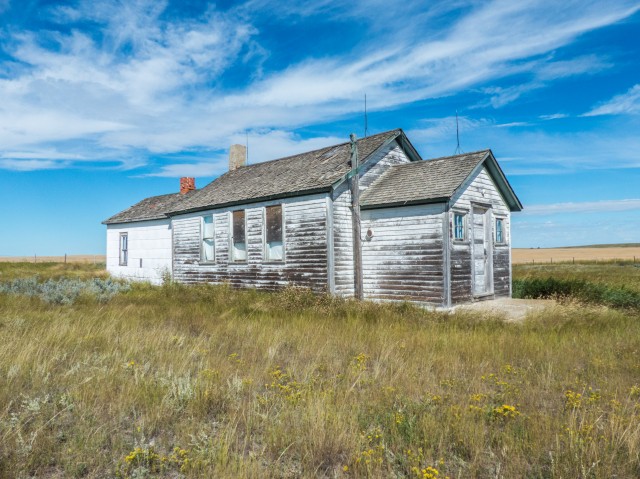
In the past it was the local school.
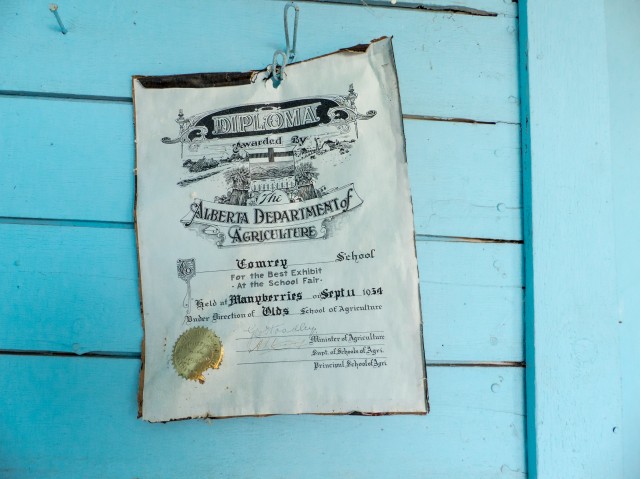
An award from 1934.
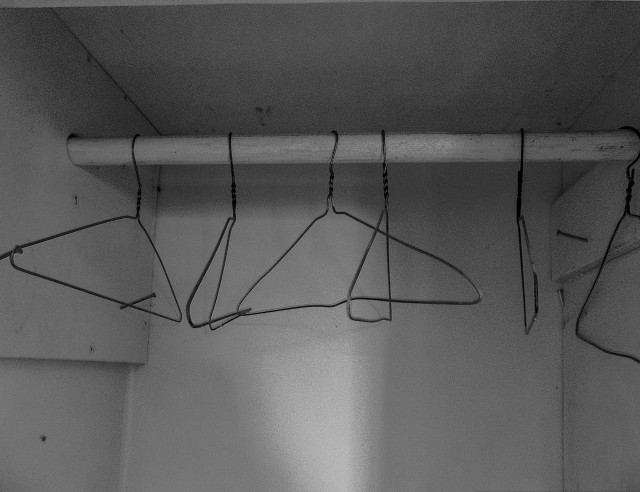
What can be said about a closet?
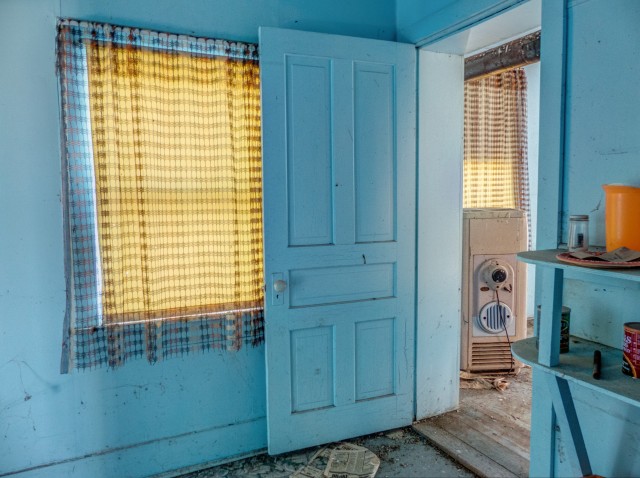
I’m pretty sure my mom had the same curtains.
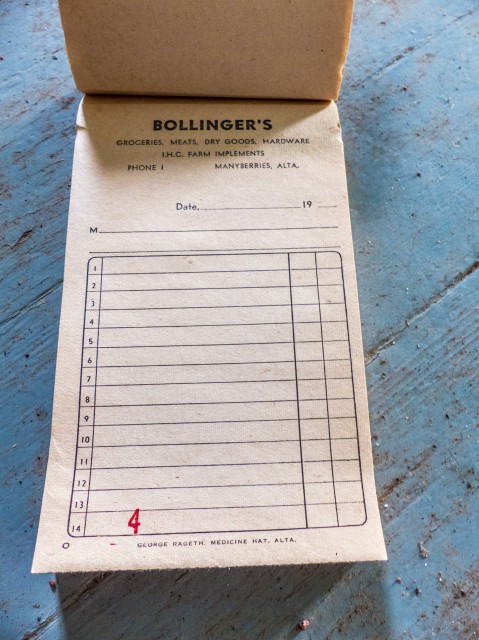
A one digit phone number!
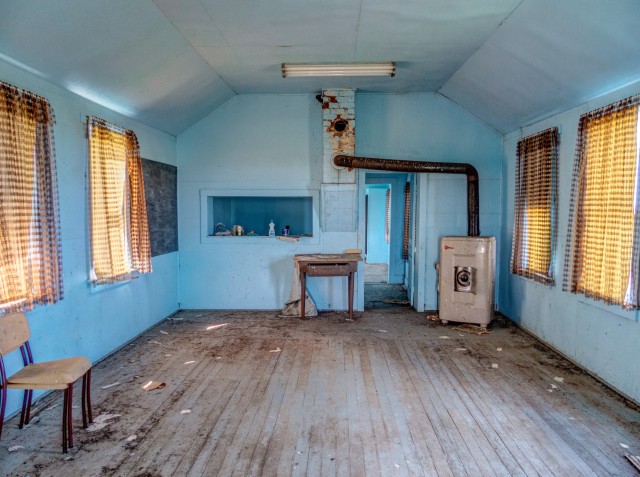
Besides being a school, the building at times was also used as a church.
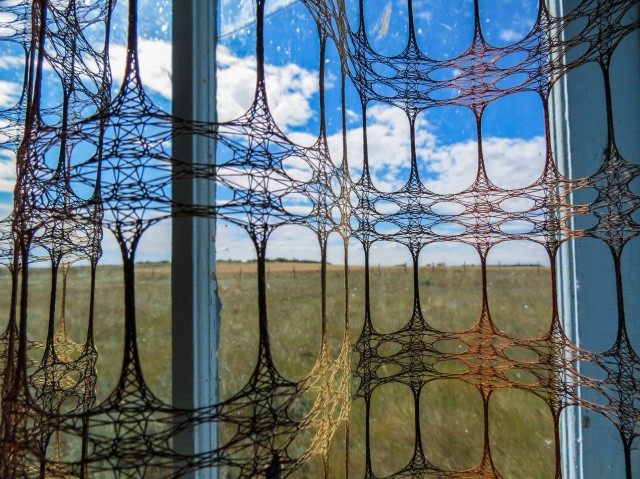
The view out to the endless prairie.
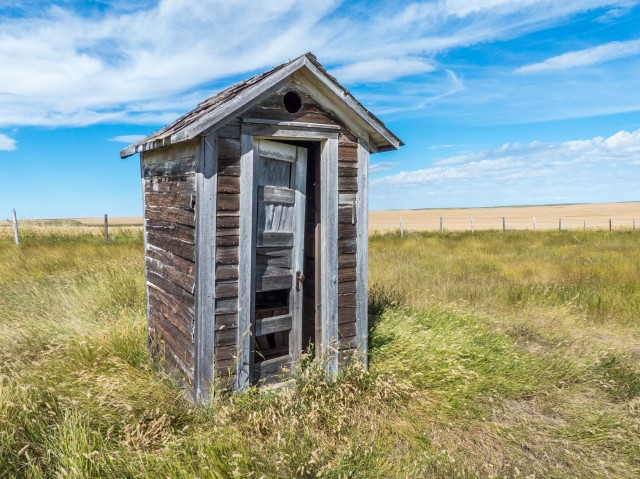
The “office”.
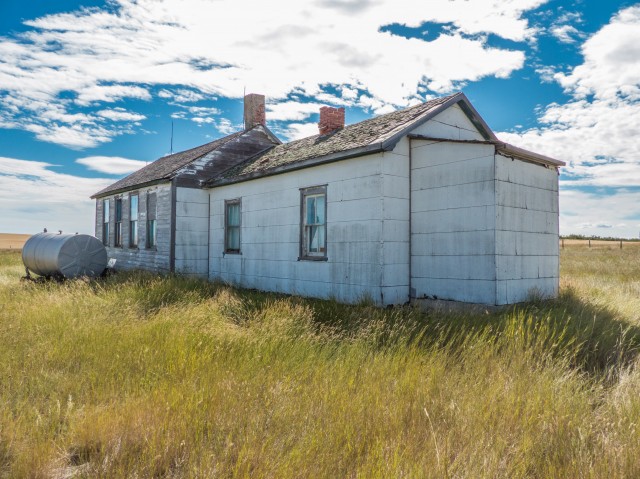
The back room is an addition added at some unknown date.
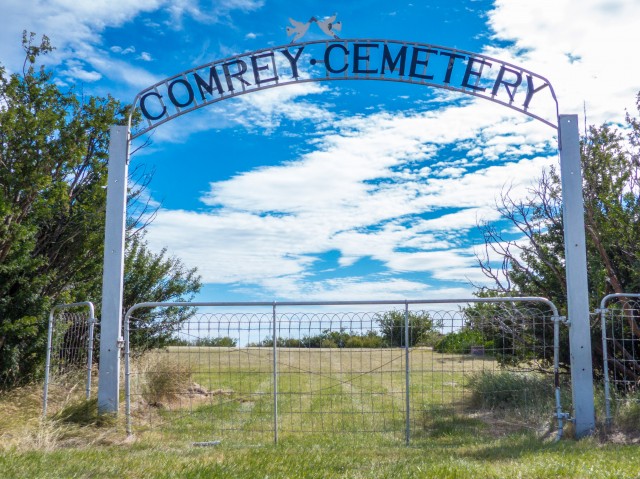
Rest in peace…
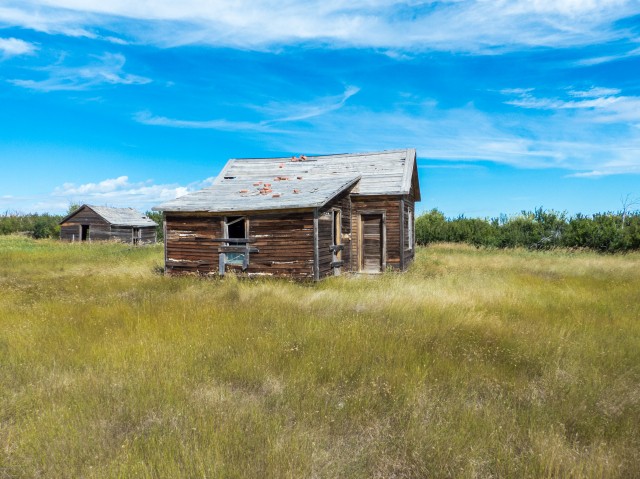
A farm just down from the community centre.
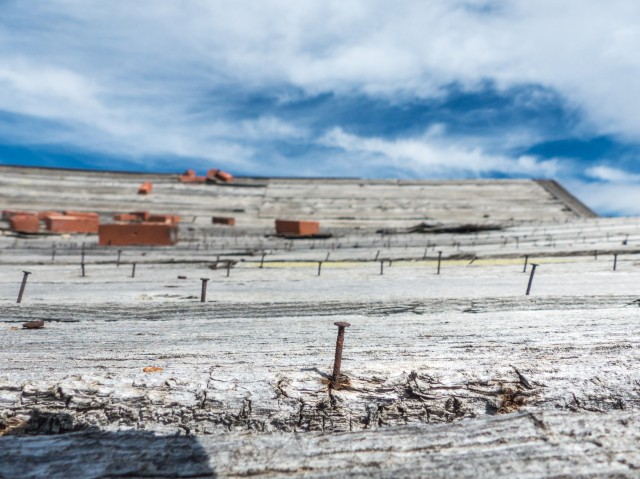
Bricks are from the collapsed chimney.
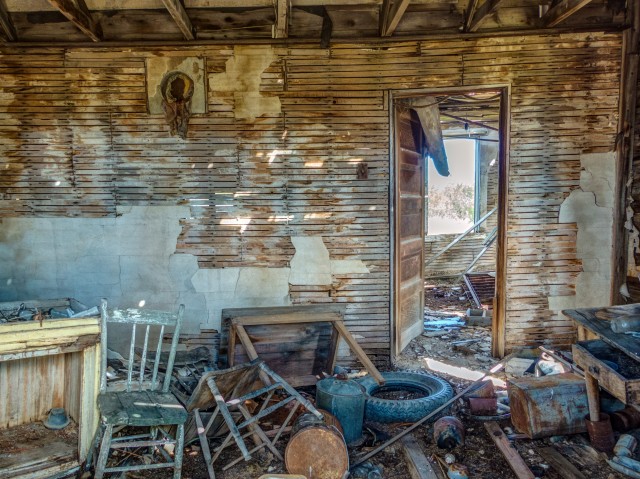
The usual assortment of old junk found in abandoned farm houses.
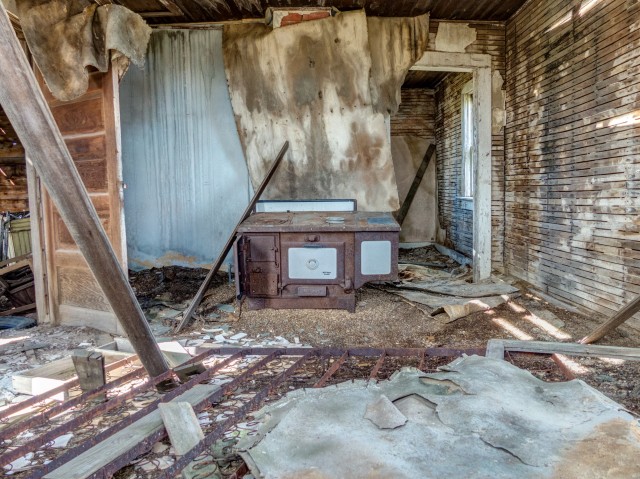
According to research it was last lived in over sixty years ago.
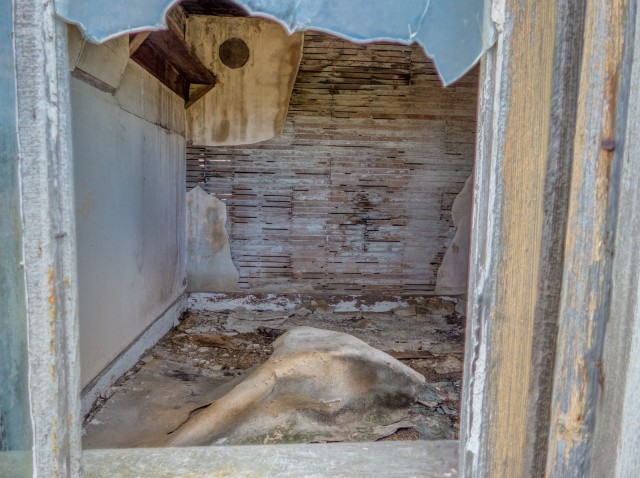
Peering in…

We were blessed with lovely blue skies.
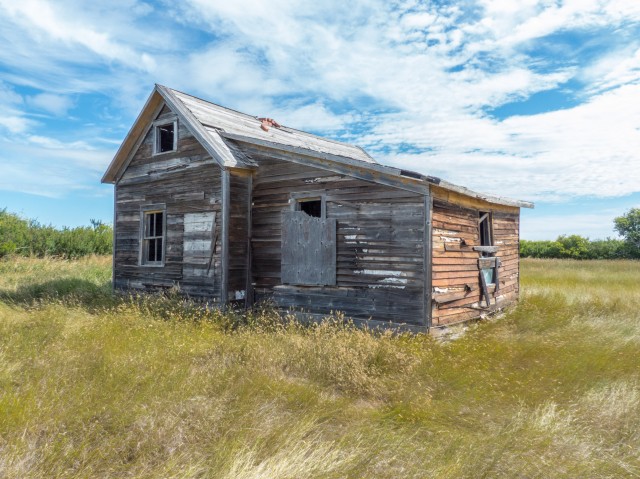
The farm was owned by a bachelor.
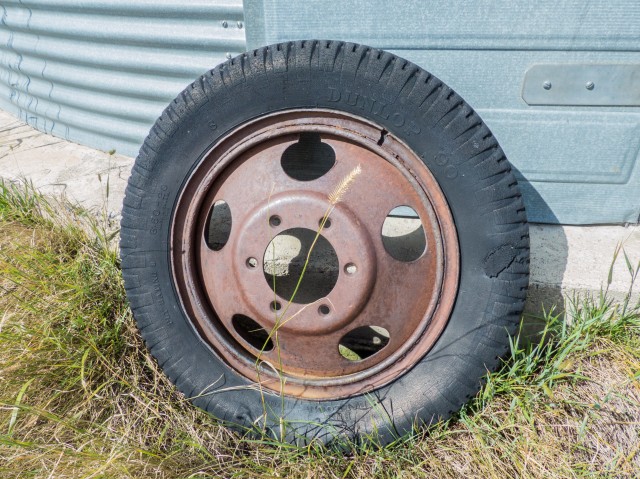
An old tire keeps a grainery door closed.
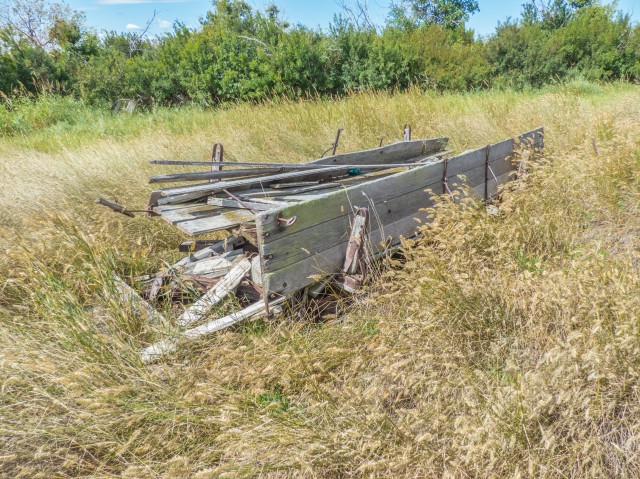
A wagon in the grass.
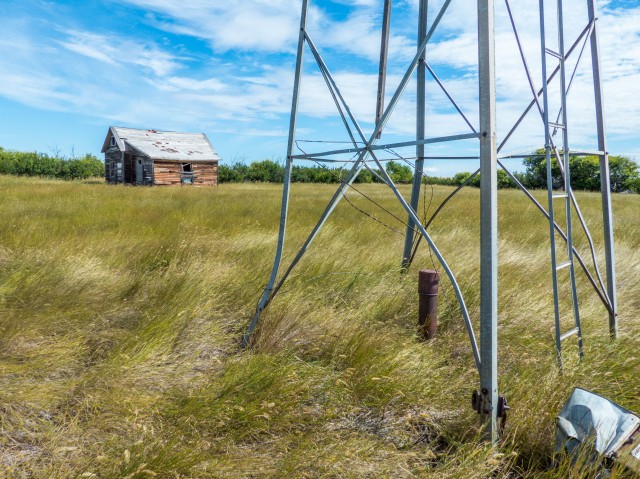
Only the wind broke the silence.
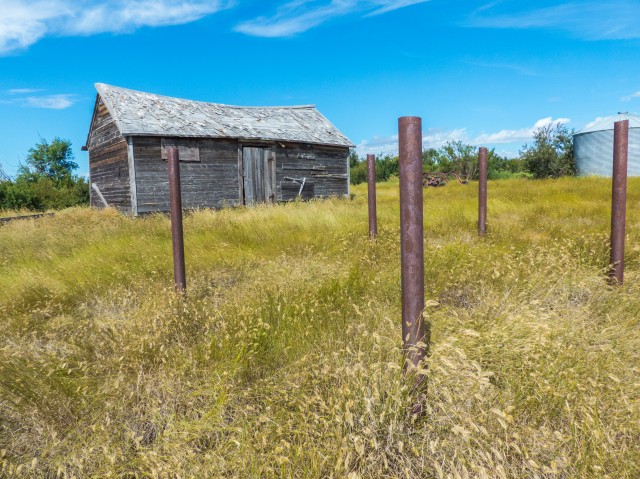
There was a row of these pipes in the ground, their purpose unknown.
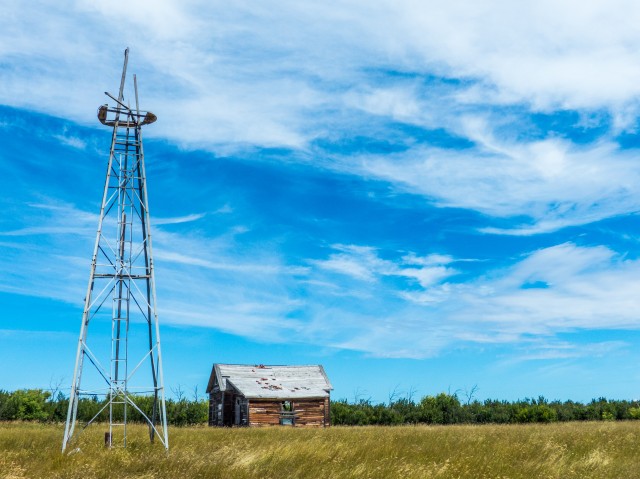
What a lonely place…
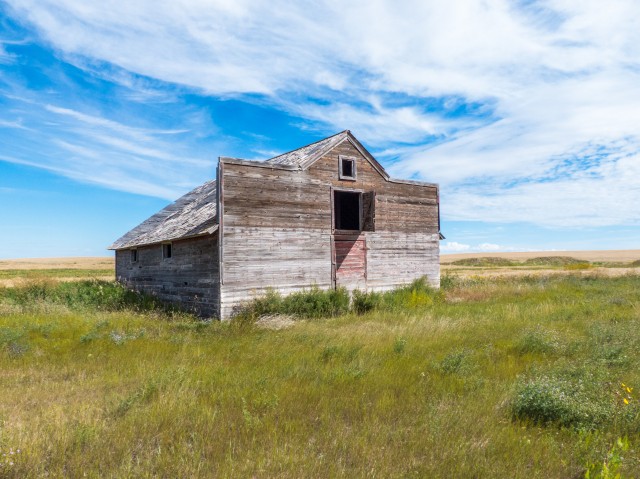
An old barn found down the road.
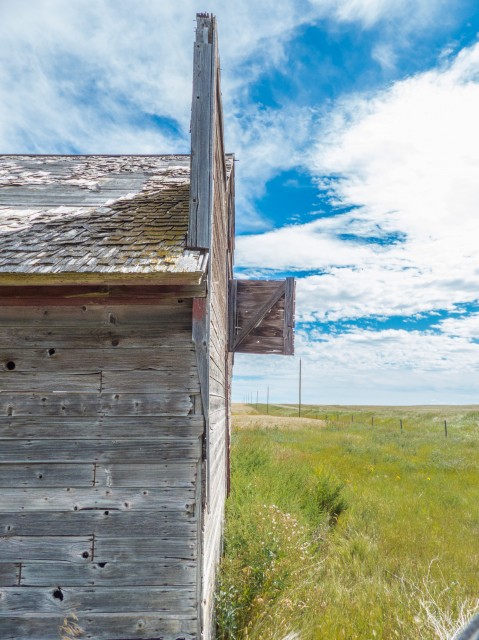
There was a farm here, but only this building remains.
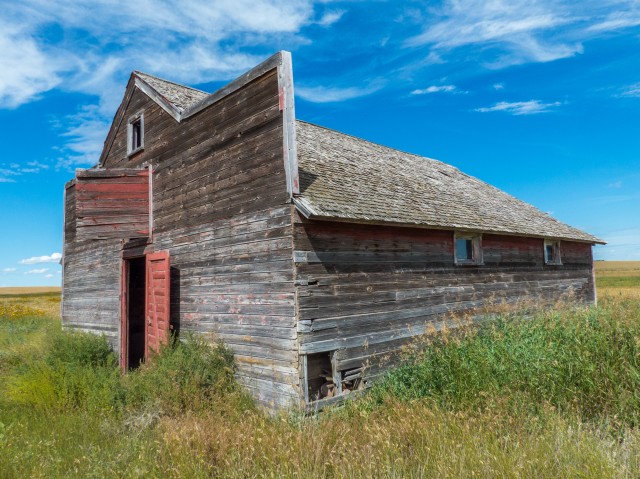
The false front makes one think it was a commercial building (see March 2015 update).
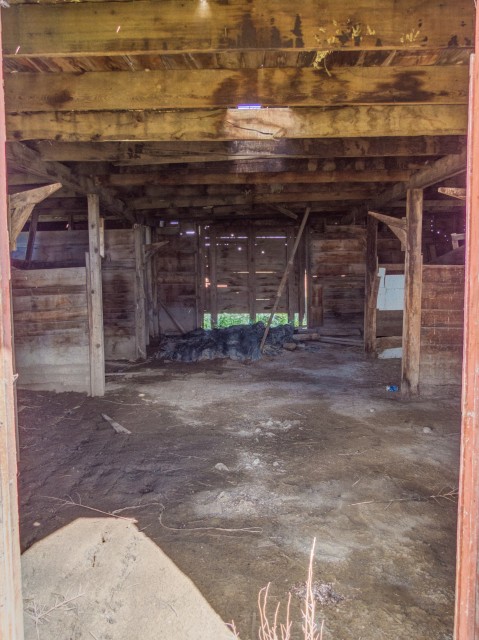
A look inside…
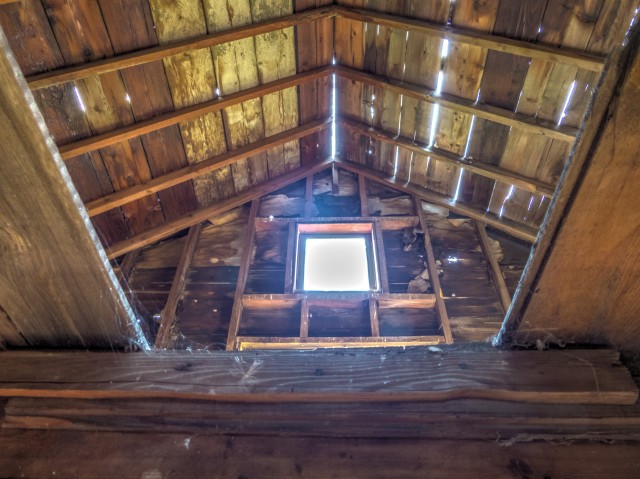
The roof leaks…a bit.
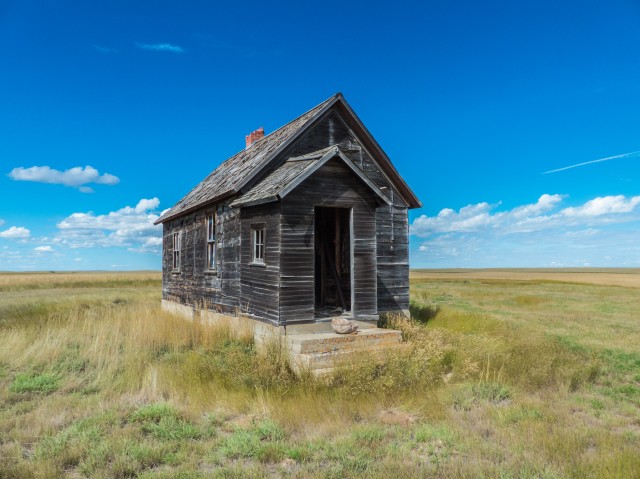
This house was found a couple clicks from Comrey.
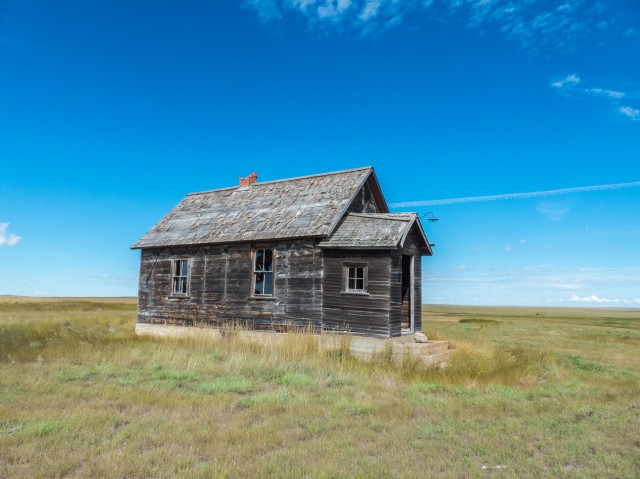
It’s one of the remotest feeling places we’ve ever visited.
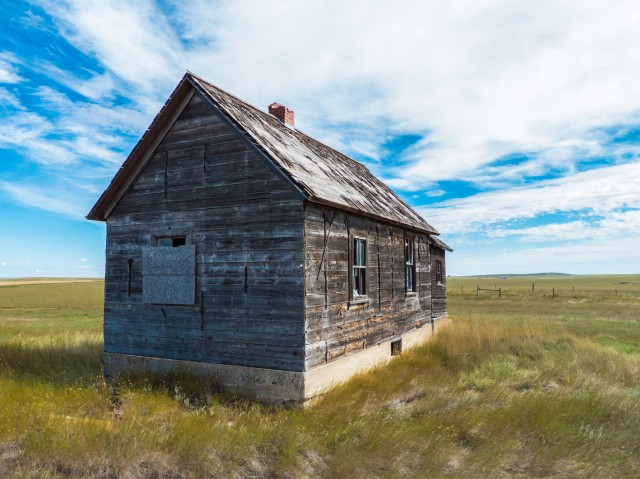
It’s a small building with only two rooms.
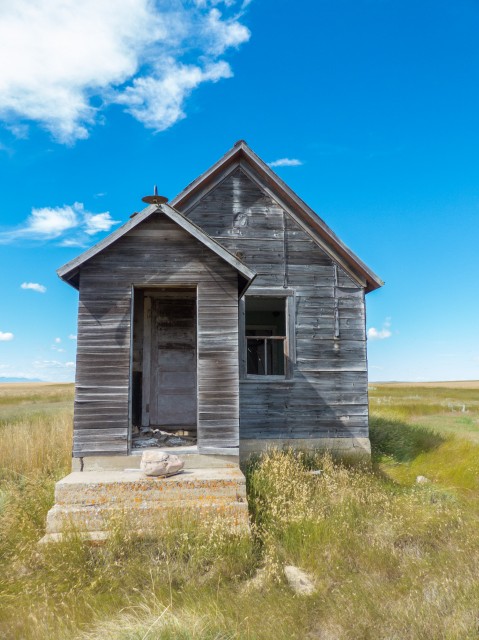
We know the names of some people who once lived here.
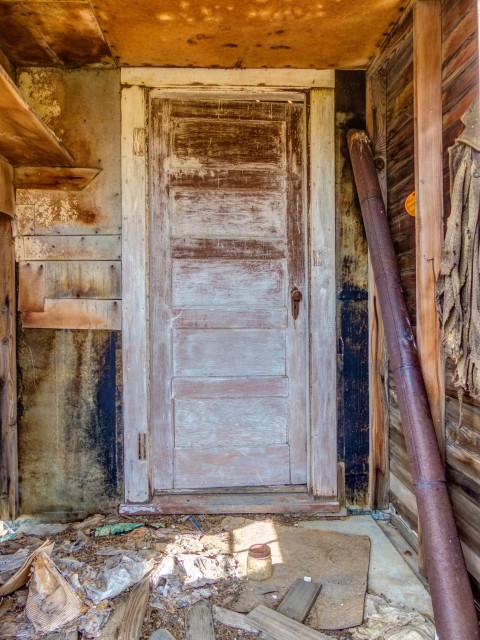
Welcome!
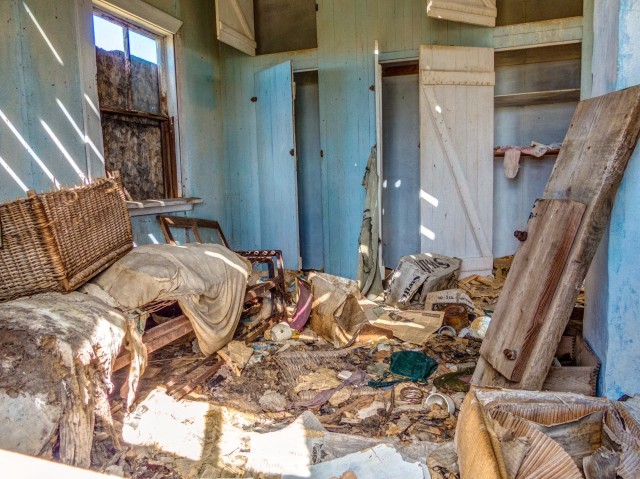
The green thing is a purse, one of many found scattered about.
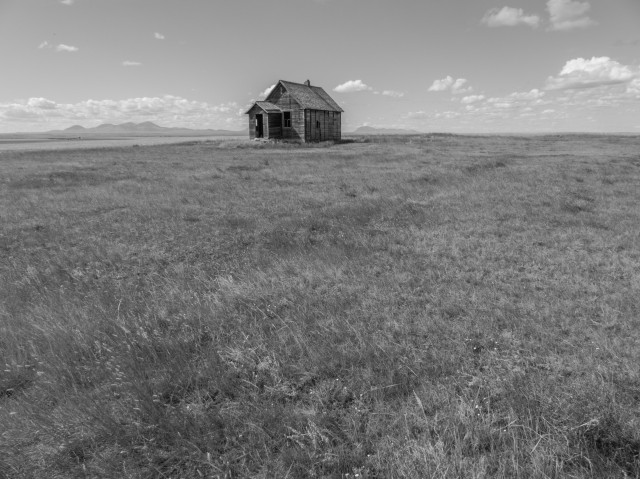
The Sweetgrass hills of Montana are seen in back.
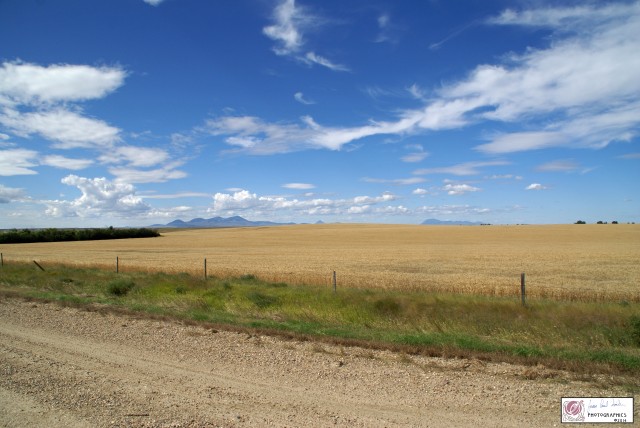
The hills can be seen from all over southern Alberta. Photo by Jason Sailer.
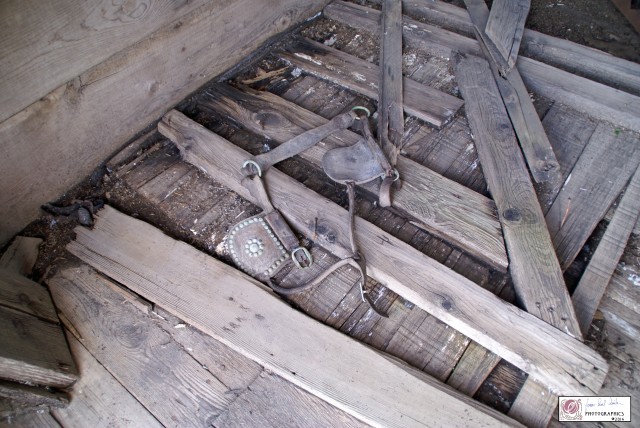
Old horse tack. Photo by Jason Sailer.
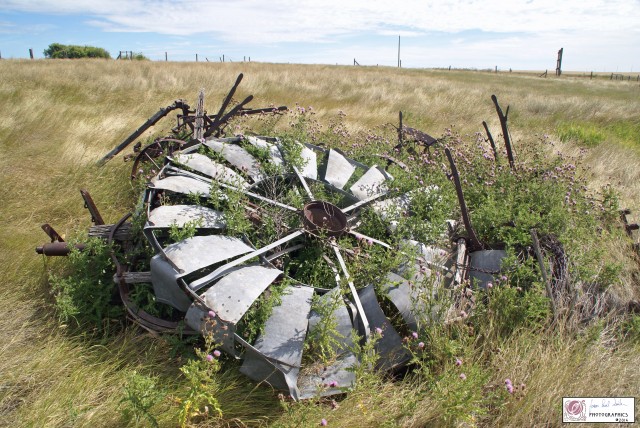
Remains of a windmill. Photo by Jason Sailer.
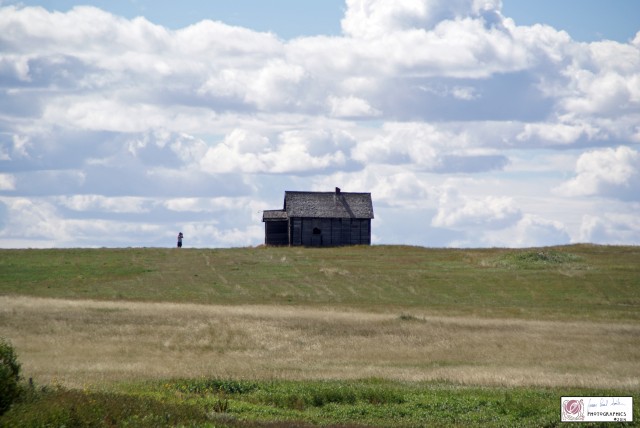
The hike-in farm from the road. Photo by Jason Sailer.

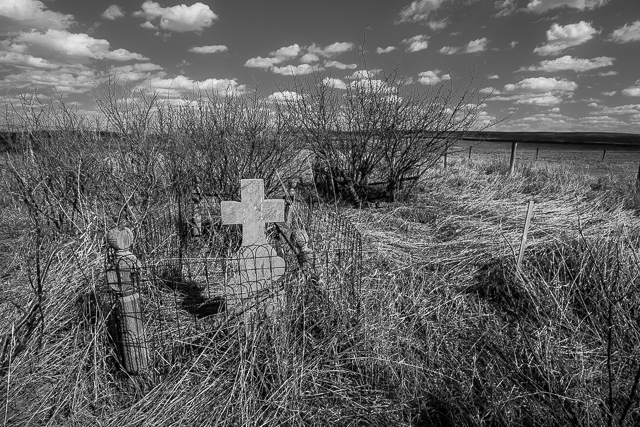
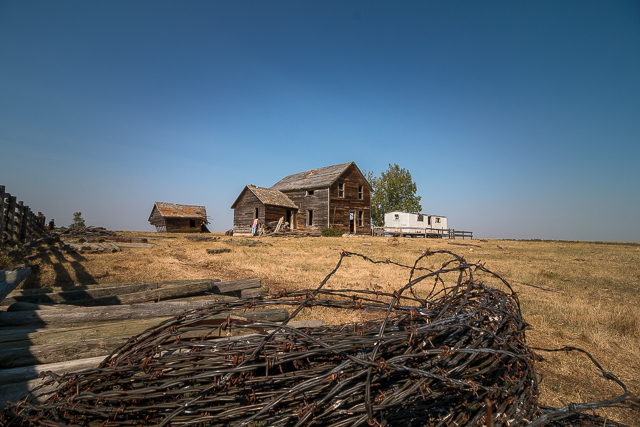
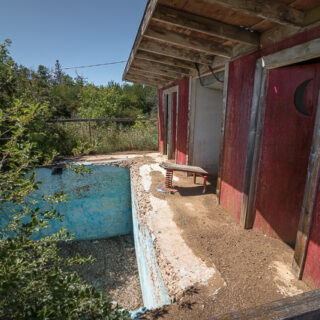
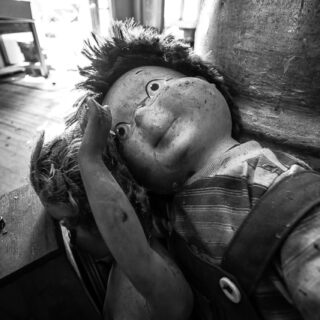
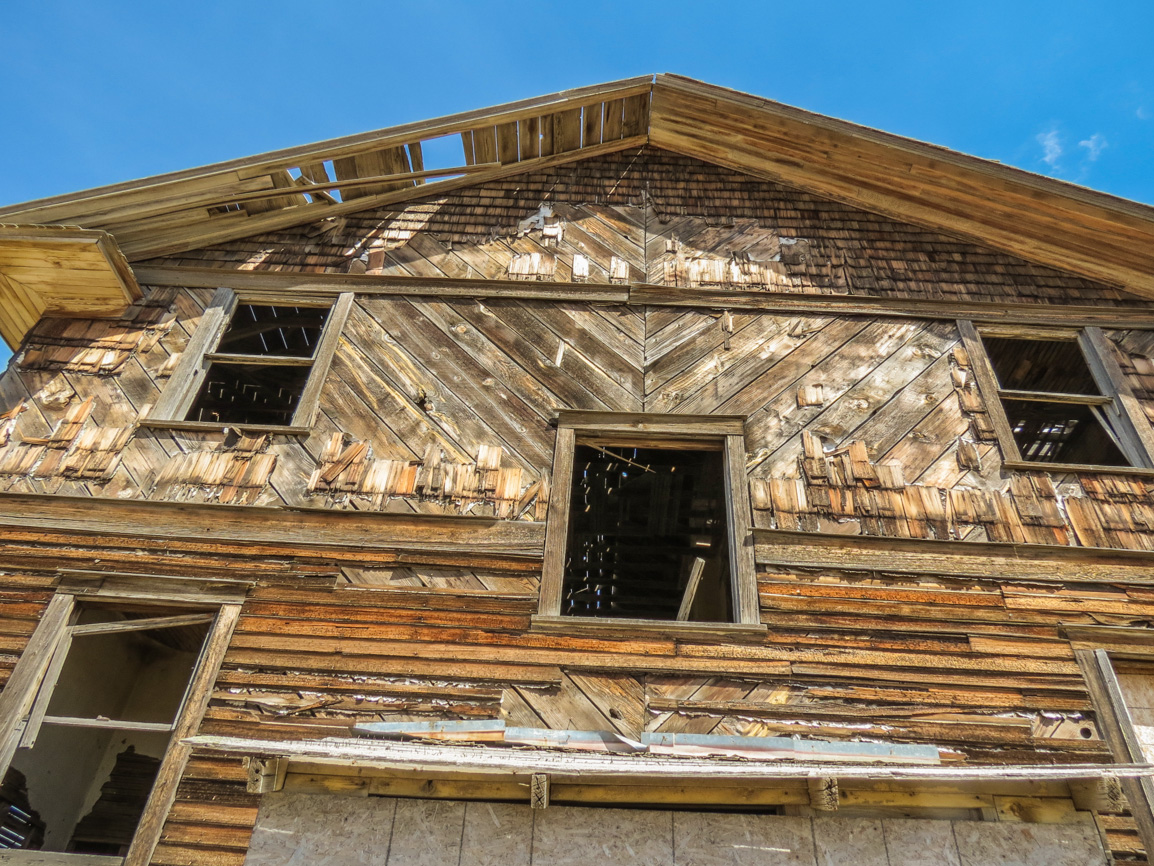
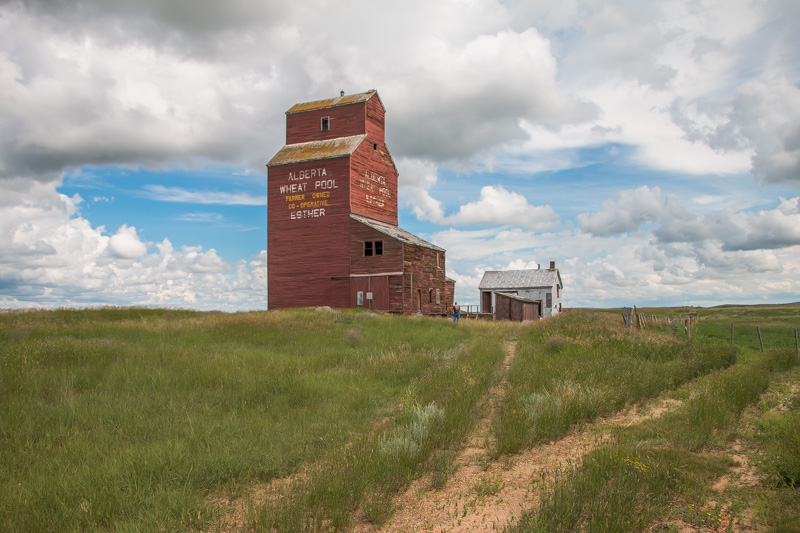
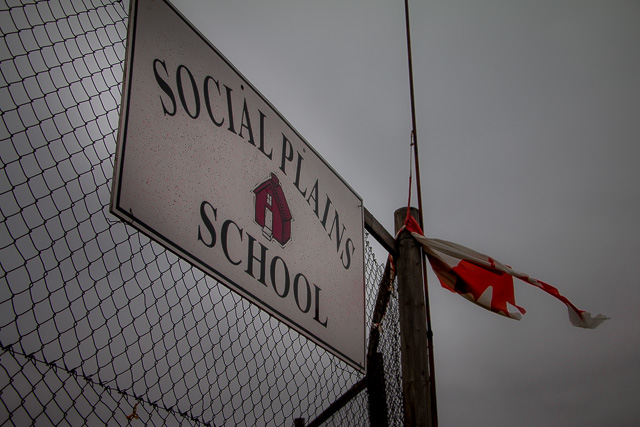
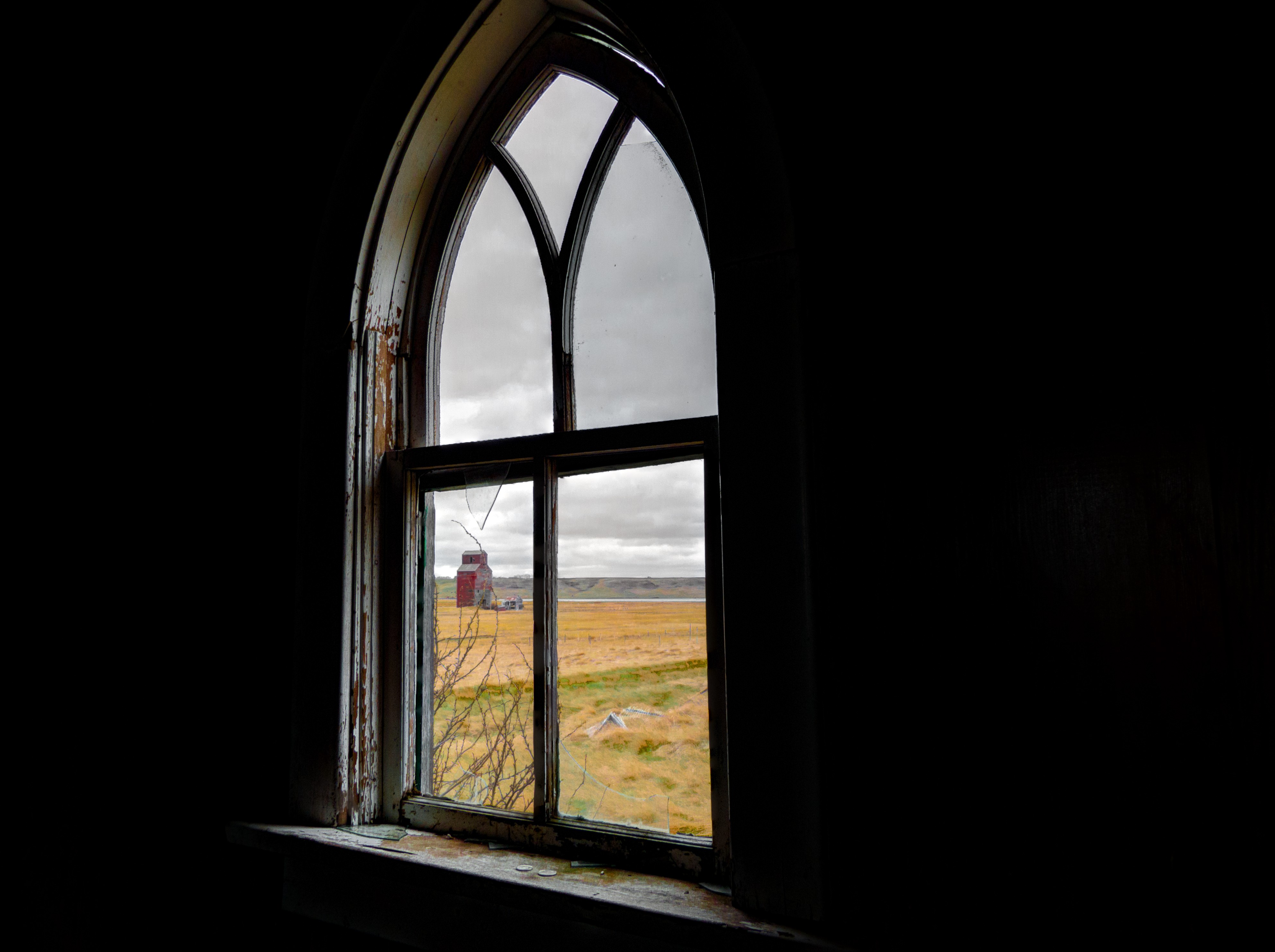
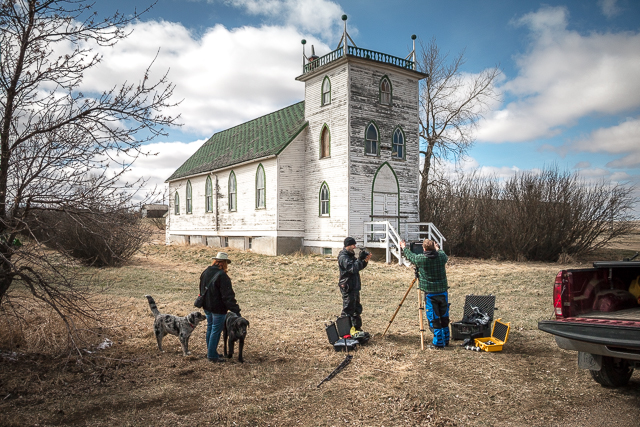
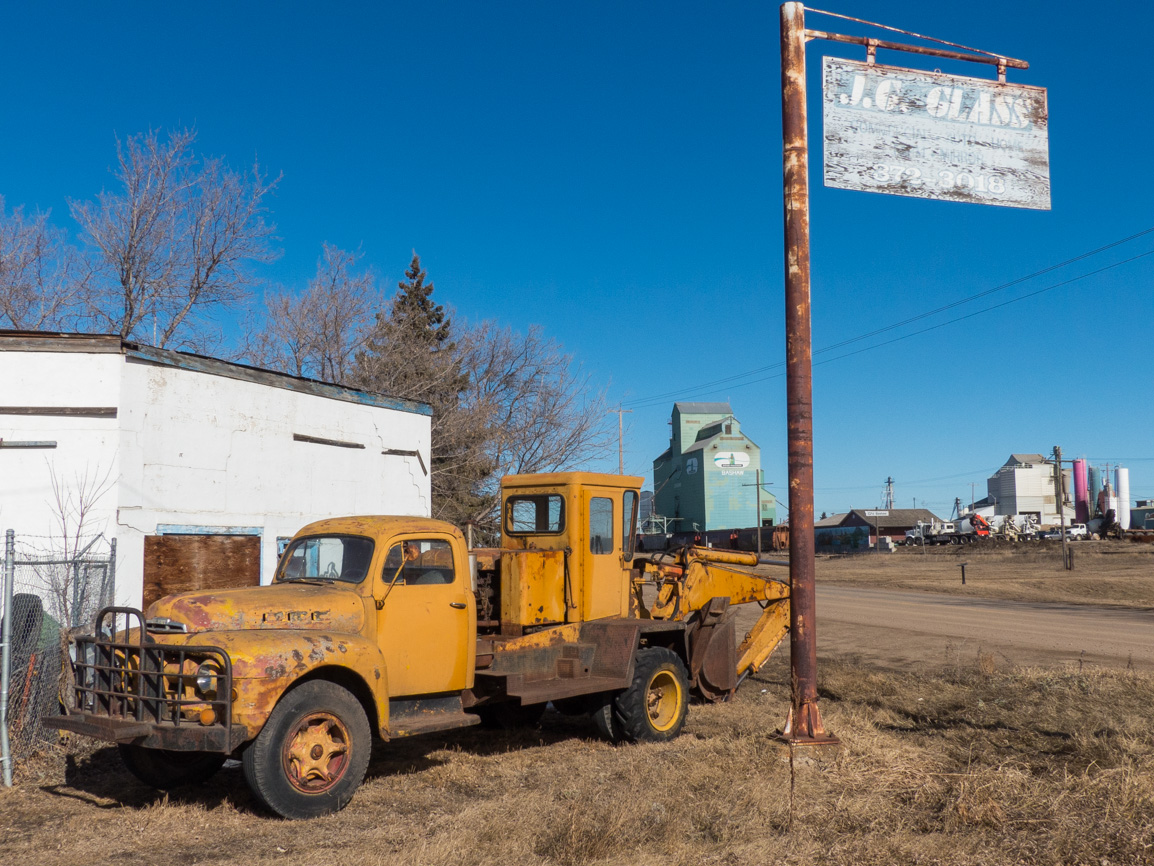
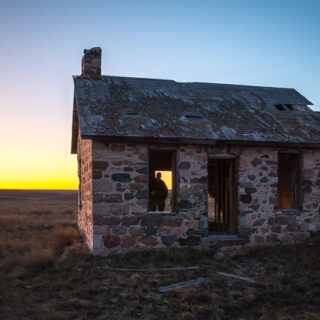
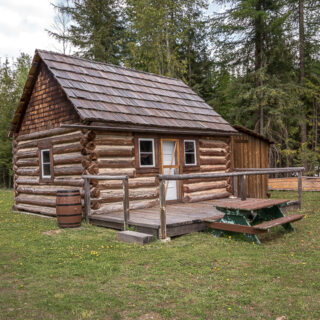
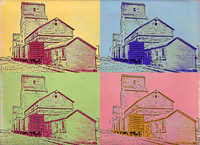






I’ve always been intrigued with the Deep South of our province and it’s rich history. I look forward to the day when I can spend many days down there exploring. Thanks for sharing Chris and Connie
Sorry, we had to step away from this site for a couple months. We’re back now. And it’s our pleasure. Thanks for commenting.
My mother was born in Comrey in 1916. She was Hazel Ethel Flora.
Her older sister was Violet, younger sister Elsie and younger brother was Donald. One brother died as a baby I believe he was named Gerald.
My grandmother was Pearl Flora and when her husband died in the 40’s she married Clarence Olsen.
Mom says when they were young they walked to school carrying a rock or stick to protect themselves from rattlesnakes.
She says though she was born there it was hard to have a German father as they were persecuted because of it. Her mother was English.
Mom loved art and it was her favourite subject at school. She was good at it. Never saw a show till she was in her 20’s when she saw one in Medicine Hat.
Worked on the Gilchrist ranch as a young woman.
Would love to go to the old Comrey graveyard and check for my uncle’s grave.
Eileen Tegart of Lethbridge AB
Wow, this is amazing and we thank you for sharing. It’s such a remote place to live and such tough times back then. People sure were hardy types a century ago.
Heh. We didn’t call our’s, “The Office”. It was the “House of Parliament”. It wasn’t until decades after those generations were gone that I understood the subtle reference.
That epic! We’ve heard a lot of terms for a biffy, but this one is most fitting.
I was originally from Pendant d’ Oreille (Ponderay) and had a lot of friends that lived in Comrey. We all went to Manyberries School together. Oh, the long bus drive everyday. My brother still lives in Ponderay.
What a remote place. I wonder if coping with that was easy? Thanks for sharing your memories!
Thank you for the article about Comery. I can still remember my grandfather telling about walking to the homestead near Comery. He was around 15 years old and with his father. It was 1910, so they were some of the original homesteaders there. Another homesteader was going the same way and offered them a ride on his wagon. My great-grandfather told him that his wagon was already overloaded, and refused the ride, much to my grandfather’s dismay!
When they eventually found the quarter to claim, they went to work building a sod hut in a bank to live in. Those were hard times, but they had land to call their own.
Two of my wife’s great uncles came over from Norway (in the late 1920’s I think) and took over the farm. Unfortunatly Pete (Borgeness, shortened from Borgenesset) was shot and killed in 1932 at the house they built. The murder was never solved. We visited the grave site this summer at the cemetary and were happy to see how well the graveyard is kept given it’s remote location.
Wow, that’s amazing! A big thanks for sharing these incredible memories. It sure is a remote place and it took a lot of resolve to settle the area. Those people were certified tough.
(via Facebook)
l looks like a school.
Admittedly, it sure does, but nothing pointed to it being one.
Thanks for the very interesting and informative trip report on another one of the remote and isolated dots on the map in the south east corner of the province that I had had a long tome fascination with. Nice to know that I am not the only one who finds that in that part of the province (as well as in the neighbouring south west corner of Saskatchewan) “The Dry Burnt Prairie Is Too Silent To Be Real” (to paraphrase Gordon Lightfoot’s Canadian Railroad Trilogy). I should e-mail you some scans I did of a 1966 Alberta Highway Map, it’s surprising how many places were considered important enough (at least in 1966) to merit inclusion in the official provincial highway map, maybe you would find some of these places fascinating enough to personally visit, mind you a lot of these places were merely grain delivery points, schools, post offices or community halls and not town sites in the conventional sense.
The more remote, the more compelled we are to visit. Comrey was remote, lonely and stunning. We’d love to see some of your old maps. Use the contact page to connect with us personally. Thanks for commenting!
I read your article this morning. It is interesting to hear others interpretations of a place called Comrey. Others refer to “The Forgotten Corner”. However for myself, it will always be know to me as my home. I grew up there. I am very familiar with the photos you have taken.
My closest friends were about 12 to 14 miles from where I lived. As a child growing up there, it was the norm, and by no means did it seem isolated. It was never so at peace as I was when I lived there. I live in Calgary now, and I don’t get out there that often, but the moment I see the Sweetgrass hills at the horizon, it’s still my home.
The old homesteaders had their own coal mine down in the Milk River. Remains of an old mining cart remained there for many years, and might still be there, because no one would be able to get it out from the very steep cliffs. But the ones who mined it knew how. The coal was then brought back to Comrey by wagon, and would heat their houses at the time.
Bootleggers also had their route through that area and down across the River to the US. Those types stories are not read in the history books, but through the generations of families that lived there. During the harvest every neighbour helped one another. They had to to survive. Now days many do not even know their neighbours across the street. Food was scarce at times during the early days, where they had to hunt wild meet to survive. Hunting for sport was unheard of in those days.
Whenever I visit there, I am reminded of the “raw nature” of day to day life there. The cycles of life. The beginning and the endings of an era. Reality of life and death. We who lived there buried our family and neighbours ourselves in the Comrey Cemetery. My Uncle was buried there two years ago, and come Spring my Grandfather of 93 who died last November, will have his ashes brought back to Comrey. One of the first and the last. Surviving the “Dirty Thirties” during the Great Depression, then immediately after, thrown into the middle of WW2, a country boy in his 20’s sent to Europe to fight so we could enjoy many of the freedoms we take for granted everyday. Through all the hardships Comrey was exposed to, with little they had, families always seemed stay on their feet, and to be happy.
The beauty of nature, and the merciless cruelty of nature. When we forget this we become lost in the mad rush of the world today, and technology. Spending a quarter of our life stuck in traffic. Or the only part of life we look forward to are the weekends. The rest of the week is work work work!! I guess my point is one needs to visit these places, outside of the city walls and concrete beneath our feet. It’s finding that place and peace of mind that comes from making and keeping life simple. The lesson that life doesn’t need to be so complicated. I am forever grateful that I had the privilege of growing up in Comrey, and learning these lessons of “The Forgotten Corner.” My home.
SW
It’s so very good to hear from you and thanks for sharing all your Comrey memories. I agree, it’s such an amazing place, remote but beautiful, and I can see why you speak fondly of it.
When I read the “southeast corner” of Alberta, I immediately thought “Medicine Hat” and kicked myself for never having heard of the place before. But then I looked at a map. Comrey is REALLY southeast!
What a strange place to set up shop. I doubt even the Indians spent much time there. From a glance at Google Earth, it looks like this place’s most proximate neighbors are Pendant d’Oreille (a ghost town to the northwest; maybe suggesting that the place was once frequented by Pend d’Oreilles Indians?) and Onefour, a cattle research ranch to the east. Truly desolate.
It’s about as lonely and remote as a place can get. It’s a strange feeling that is hard to describe. I’ve been to Pendant d’Oreille and it’s similar in its isolation. Onefour is on the to-do list.
These photos are breathtaking!
Awe, shucks.
I stumbled across some info about Comrey in the “Poineering with a Piece of Chalk” book. It was named after 6 settlers, of which Ole Roen, who you mentioned above, was the “O” in C-O-M-R-E-Y.
The Olson house looks SO much like a small schoolhouse! A two room house for a family seems so crazy today! You’d be living on top of eachother! I have an older cousin who, in the late 50’s, grew up in a 2 room house, maybe even smaller than the Olson house. The house is now a chicken coup at my parent’s farm. I had no idea until recently that my relatives once lived in the tiny building!
Ole, the O in Comrey? Interesting, I missed that. The Olson house sure looks like a school. And agreed, how in the hell did a family live in such tight quarters? I’d love to see that old house you spoke of.
Thanks for giving us the history and great photos.
I just could not imagine the long Winters so far from anywhere.
I’m really surprised the buildings have survived for so long,maybe it’s becuase its so far from anyway.
Great work,your preserving it’s history.
Comrey will now spring to mind when the word lonely comes up.
That is very remote! Just figured out where it is, not even mentioned on the back roads atlas… Is that 4×4 territory down there? Me with my small compact car… LOL I just came through some rather remote territory recently driving from Hinton to Nordegg on Highway 40 & Forestry Trunk, in my small car! Lots of gravel, lots of forest, only saw a handful of other vehicles the whole time, mostly pickups…
The roads are pretty good overall, a regular car can handle it, but I’d hate it if there was a problem.
Thanks for exploring this and sharing with us. You are right. It would take some very special and strong people to live in a place so remote.
They were a tough lot.
Love that SE corner, as long as you have a couple vehicles in a convoy. I’d sure hate to have a breakdown out there.
Being on the moon would be less remote.
I have been there hiked to the bottom of the canyon
Cool! Pics?